Petroleum jelly, or Vaseline as we know it, is a product that you’ll find in about every medicine cabinet. Growing up it was the cure for everything from chapped lips to diaper rashes. In fact, I think my Grandma still uses it to this day to remove her makeup!
However, I think you can guess by the name that petroleum jelly isn’t the best way to hydrate or protect your skin. Instead of reaching for the blue lid, reach for one of the petroleum jelly alternatives listed below.
*Affiliate Disclosure: I do have affiliate links in this blog post. If you purchase something from my link, I will receive a small commission from the sale. This comes at no cost to you, but is paid by the company. I do not take becoming an affiliate with any company lightly. If I am, it’s because I believe in the company and their product.
*Suzi(Gurl Gone Green) is a participant in the Amazon Services LLC Associates Program, an affiliate advertising program designed to provide a means for sites to earn advertising fees by advertising and linking to amazon.com.
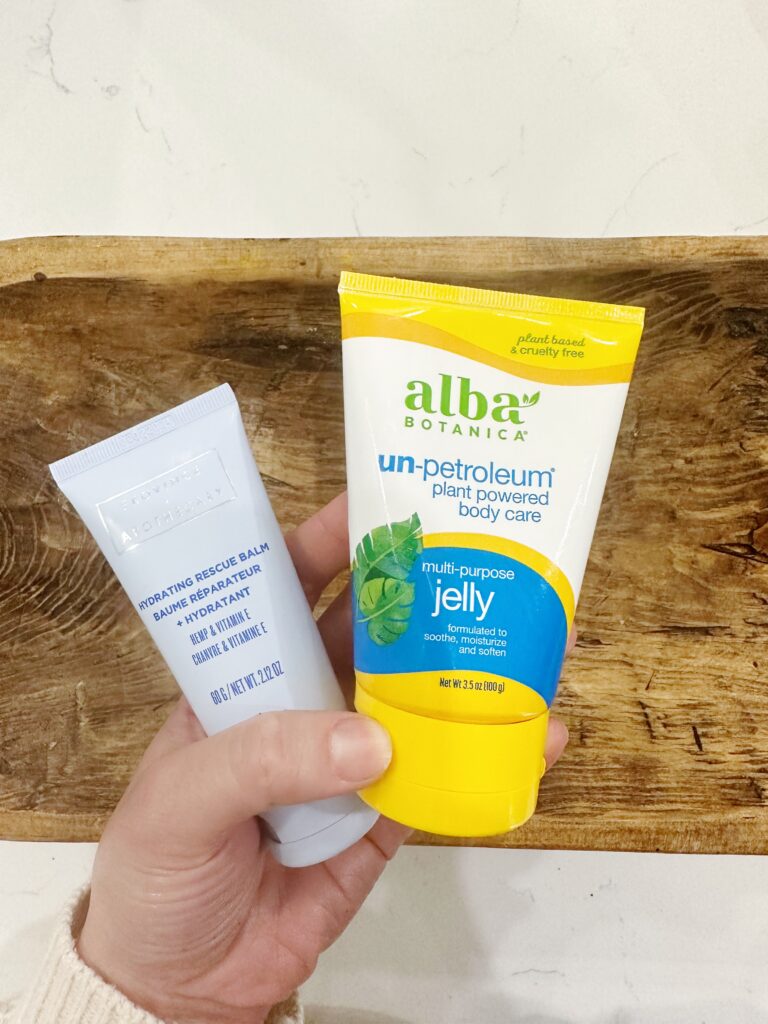
Best Alternatives to Petroleum Jelly
Alba Botanica’s Un-Petroleum feels just like petroleum jelly but doesn’t have the harmful ingredients in it. If you’re wanting a true swap that feels like petroleum jelly but isn’t, then this is it. I also love that it comes in an easy to squeeze tube and is budget friendly and easy to find on Amazon. All of these things make it a winner!
The second one I have to recommend is Province Apothecary’s Hydrating Rescue Balm. It is a little oilier than a true petroleum jelly but incredibly nourishing and healing to the skin. Works for so many things. It feels more moisturizing than a typical petroleum jelly.
What Exactly Is Petroleum Jelly?
Petroleum jelly is a mixture of mineral oil and paraffin wax derived from petroleum and used as a topical skin ointment. The mineral oil in petroleum jelly consists of saturated hydrocarbons and aromatic hydrocarbons.
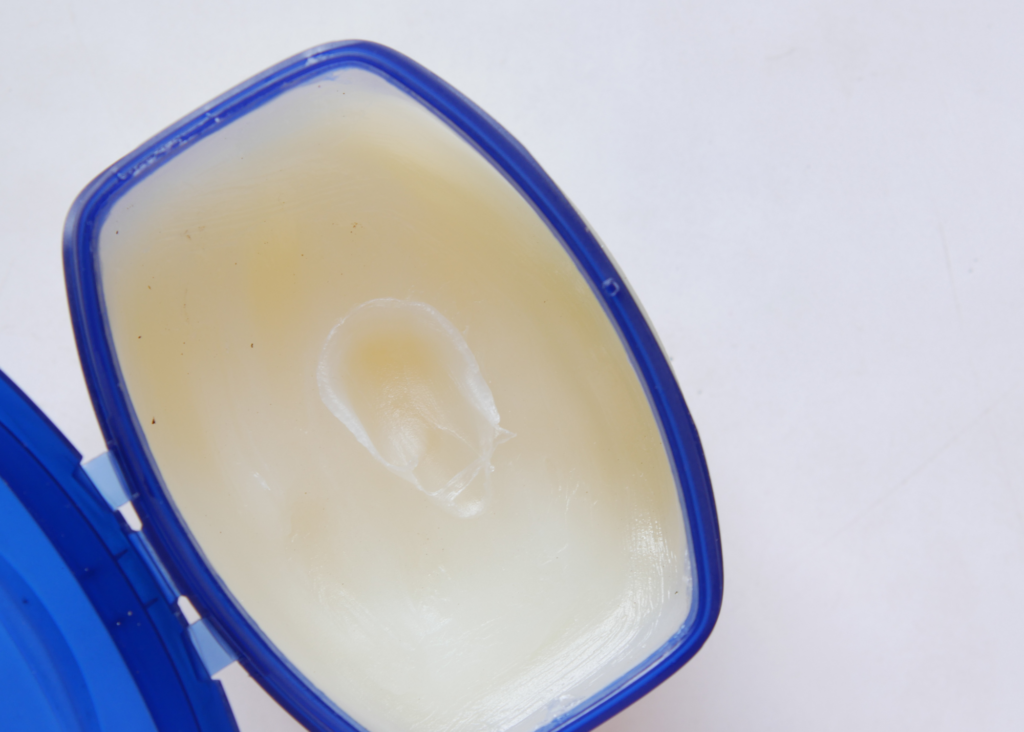
Is Vaseline The Same As Petroleum Jelly?
While petroleum jelly is sold under the brand name Vaseline, there are other petroleum jelly products aside from Vaseline. It’s similar to how we use the brand name Chapstick for lip balm.
Vaseline claims that their petroleum jelly is made from triple purified petroleum jelly to remove any impurities. Whether all impurities are truly removed is for you to decide.
What Is Petroleum Jelly Typically Used For?
In general, petroleum jelly is used to hydrate and protect skin. It creates a barrier between the elements and your skin and locks in moisture.
Petroleum jelly is commonly used for:
- Wounds
- Burns
- Chapped lips
- Diaper rash
- Eczema
- Remove makeup
Related Content: Natural Medicine Cabinet
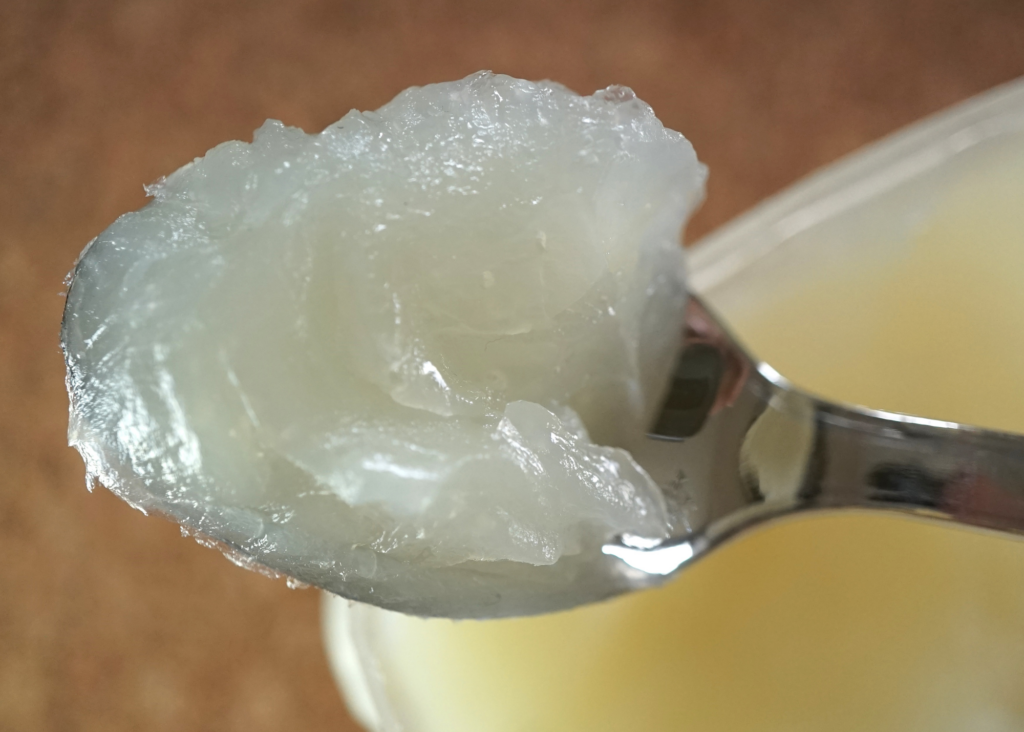
Drawbacks of Petroleum Jelly
PAH’s And Health Implications
PAH’s, or petrolatum impurity polycyclic aromatic hydrocarbons, are found in oil, coal, and tar. A study found a connection to PAH’s and breast cancer. In fact, the women in the study were 2.6x more likely to have increased amounts of PAH’s in their breast tissue than women without breast cancer. (1)
Skin Health
Petroleum jelly forms a barrier to the skin which can block the skin’s ability to breathe and can trap bacteria, sweat, and dirt. This can slow the cell renewal process and speed up the aging process. It also can prevent the skin from absorbing beneficial ingredients from other products. Not to mention do you really want to be absorbing or accidentally ingesting petroleum byproducts into your body?
Estrogen Dominance
Petroleum products contain chemicals such as xenoestrogens. Xenoestrogens can cause hormone disruption, specifically estrogen dominance. Estrogen dominance can lead to allergies, autoimmune disorders, infertility, to name just a few of the issues associated with it.(2)
Exposure To Contaminants
According to the Environmental Working Group, a contaminant called 1,4 dioxane, a carcinogen, was found in 22 percent of all petroleum-based makeup products.(3)
Research has also revealed that mineral oil hydrocarbons, which are a part of petroleum, can be absorbed through the skin and build up in the fat tissue of the body.(4)
Related Content: Should Beef Tallow Be Used For Skin?
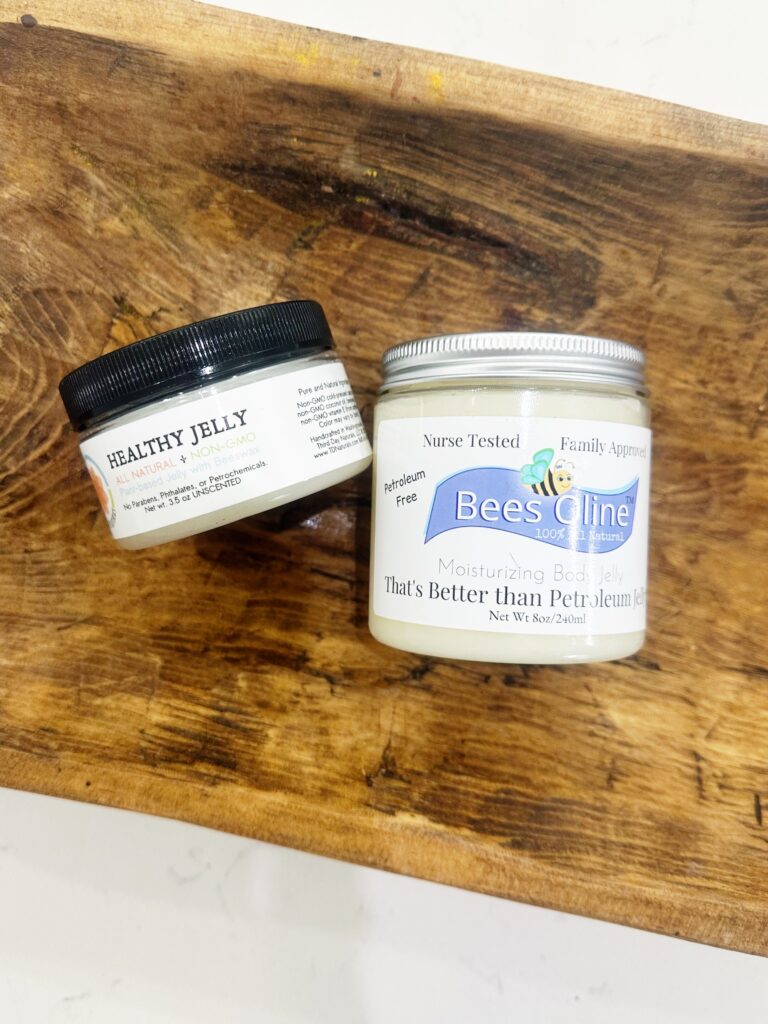
Benefits Of Natural Alternatives to Petroleum Jelly
- Natural alternatives are nutrient-rich vs petroleum jelly which is devoid of nutrients.
- Natural alternatives have moisturizing properties whereas petroleum jelly doesn’t have any moisturizing properties.
- Natural alternatives can be absorbed into the body without the risk of toxins or contaminants.
8 Best Natural Petroleum Jelly Alternatives
**Prices are subject to change and are accurate as of publish date**
Restore Healing Balm

This multi-tasking balm supports, hydrates, and restores damaged skin. Soothes chapped lips, burns, cuts, and scrapes.
Active Ingredients
- Castor seed oil
- Glycerin
- Hydrogenated castor oil
Price: $30
Review
This is a very potent balm! It’s thicker in texture than some of the other balms I tried. This one came highly recommended. I used it on my brows to keep them in place and for added growth, for burns, scrapes, wart removal scabs on my daughter, and my lips. It also is extremely moisturizing. I like applying this to my heel on the bottom of my foot. It helps to seal in the cracks and keep it smooth. I love that this comes in a small tube- makes it easy to travel with. I read some reviews that said it works well for cold sores. I personally haven’t tried using it on cold sores, but I definitely will if I get one! This would be a product I would recommend to anyone who had a medical procedure and they recommend Vaseline, this would be a good replacement.
One Love Organics Skin Savior Multi-tasking Wonderbalm

This balm-to-oil formula is a multitasking balm that works as a makeup remover, a skin conditioning face mask, and an ultra-rich moisturizer. It can help improve dull, dry skin and the appearance of fine lines.
Active Ingredients
- Organic coconut oil
- Organic mango butter
- Jojoba
- Organic chia seed extract
Price: $49
Review
I’m no stranger to this balm. This is one of the products I’ve used the longest. It works so well at moisturizing the skin, but also protecting it. It also is great at treating burns- firsthand experience and removing makeup. It’s one of those products that’s great for travel because it can do so much! When I got a curling iron burn I applied it and it soothed it and healed it up so much quicker than previous burns. I love applying on rough areas like my elbows or knees or feet at night for extra moisture. It’s fragrance free which is a bonus too! You don’t need that much, a little goes a long way. This would also be a great product to protect skin from getting wind burned or chapped.
Beesoline Multi-Purpose Natural & Organic Moisturizer
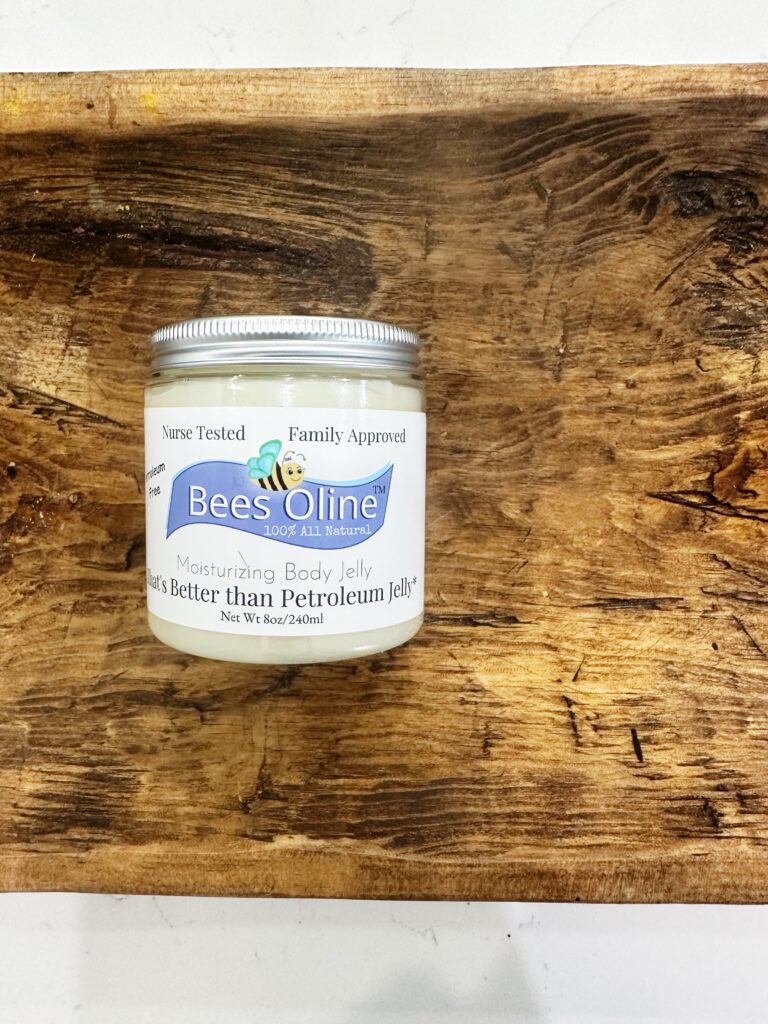
This multi-purpose ointment is deeply moisturizing, nourishing and promotes healing of minor cuts, burns, scrapes, and other irritations. It is a petroleum-free alternative that soothes dry itchy skin along with reducing stretch marks, and supports tattoo aftercare.
Active Ingredients
- Non-GMO sunflower oil
- Organic/Non-GMO castor oil
- Jojoba butter
- Pharmaceutical grade beeswax
Price: $16.99
Review
This product feels a little more oily than some of the others. It’s one of the more budget friendly options which I love. You get a lot of product for your money. It’s more moisturizing than others and not thick, but then your skin does feel a little greasier. This would be great for kids or babies to protect their skin as there is no scent and it’s easy to rub on. I like rubbing this into my cuticles since it’s a little oilier to moisturize them. A little goes a long way. Would be a great option for diaper rash or for anyone who suffers from eczema as it’s very soothing.
Alba Botanica Un-Petroleum Jelly
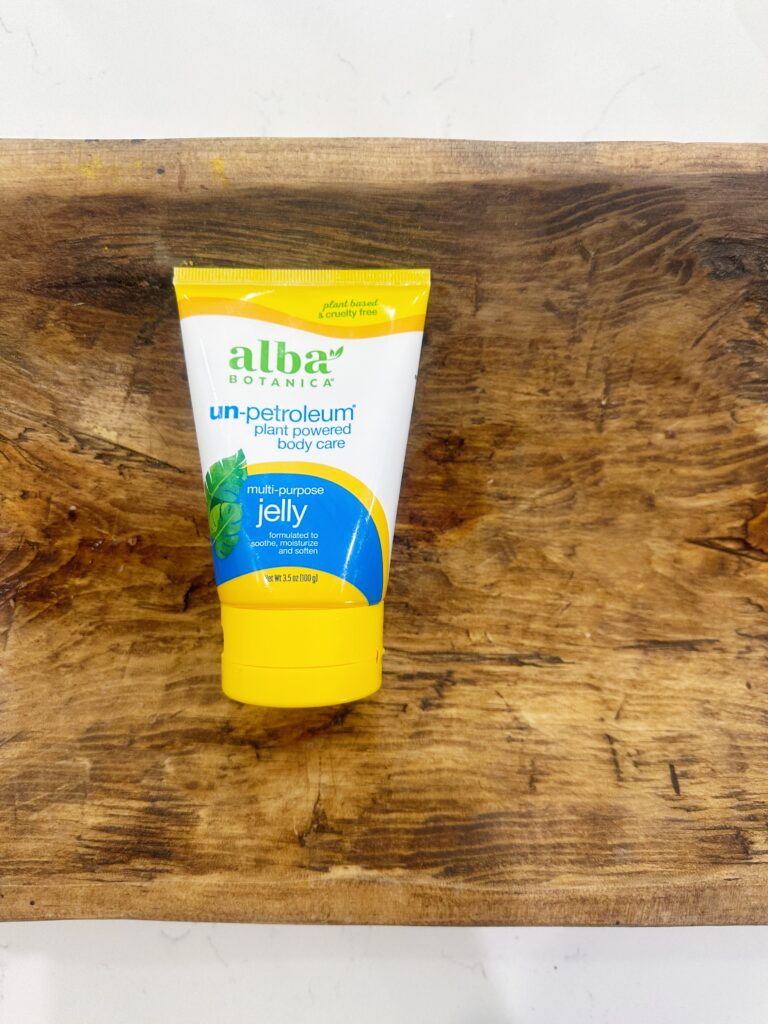
This Multi-Purpose Jelly protects skin from chafing by providing a botanical-rich moisture barrier. It can also be used as an eye makeup remover or for diaper rashes.
Active Ingredients
- Castor seed oil
- Organic Sunflower seed oil
- Beeswax
Price: $9.95
Review
This feels exactly like petroleum jelly would feel. So if you’re used to that and wanting to make a switch this would be a good option. It’s thicker but not so thick it can’t squeeze out of a tube. Great for preventing chafing and windburn and soothing irritated skin. Also a great budget friendly pick too and easy to use as it comes in a tube. Definitely a great guy pick as it looks a little more manly and the fact that it does come in a tube.
Maty’s Multi-Purpose Baby Ointment

This ointment nourishes and protects baby’s skin and can be used for cradle crap, chapped lips, and can help prevent diaper rash. It’s formulated with healthy oils and without petroleum, hydrogenated oils, or artificial fragrances.
Active Ingredients
- Non-GMO Coconut Oil
- Non-GMO Jojoba Oil
- Non-GMO Vitamin E
Price: $13.49
Review
This is marketed towards babies more, but you could use it for so many things as an adult or just to have on hand as a family in general. The texture is definitely more oily overall which tends to feel more greasy. I don’t love that. It is more budget friendly overall. You get 10 ounces for $13.49 which is a steal. However, this one wasn’t my favorite pick. It didn’t feel as moisturizing on my skin, but like it just sat on the top. It felt stickier to me as well.
Healthy Jelly
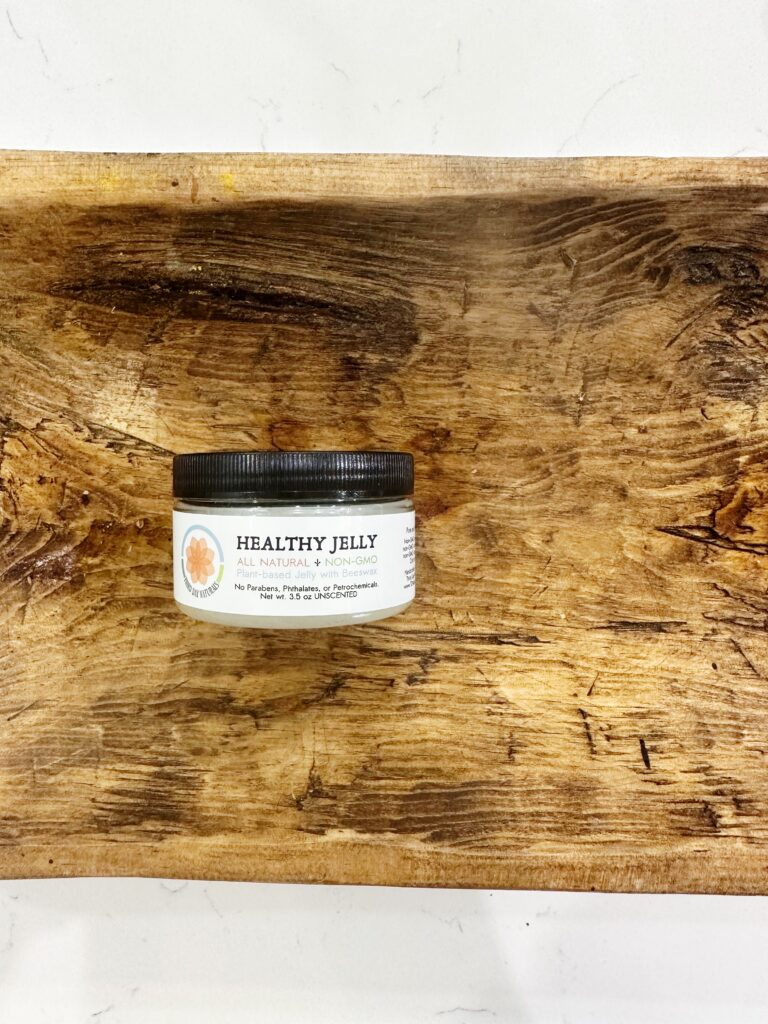
This unscented skin jelly is the natural alternative to petroleum based jelly.
Active Ingredients
- Non-GMO cold pressed castor oil
- Non-GMO coconut oil
- Beeswax
- Vitamin E
Price: $9.99
Review
This also wasn’t one of my favorites. Felt sticky like the Maty’s Baby Ointment and didn’t really feel super nourishing to the skin, but greasy.
CV Skinlabs Restorative Skin Balm
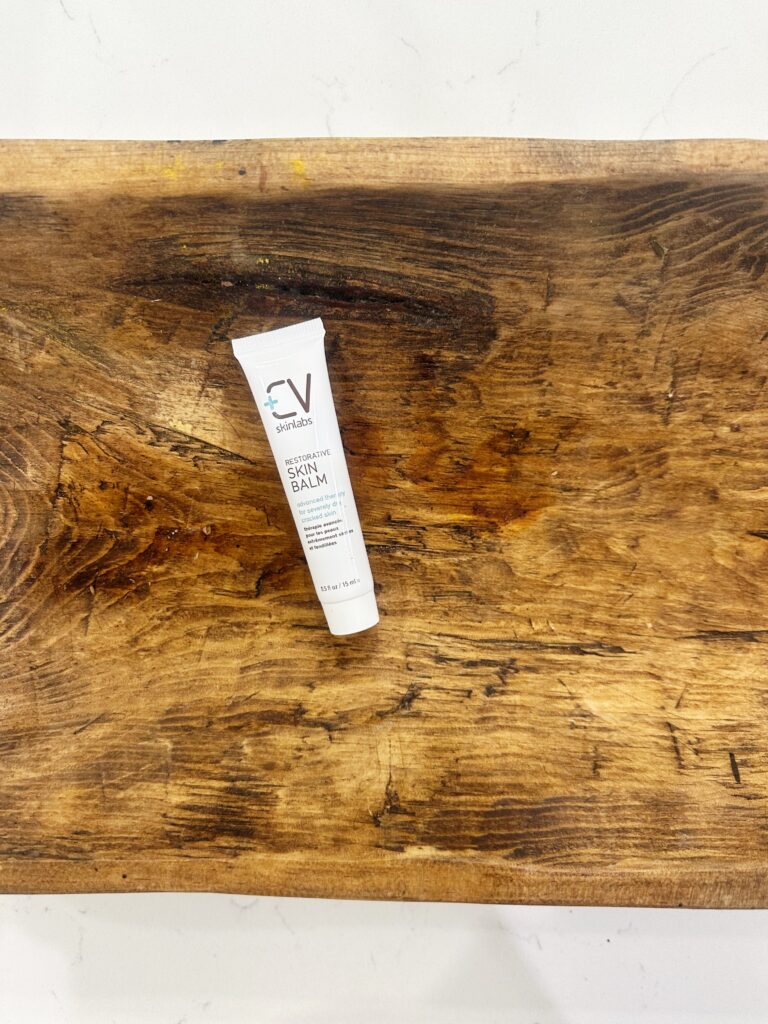
This soothing salve creates a barrier to trap in moisture. Helps repair dry, cracked, chapped, burned, wounded skin.
Active Ingredients
- Turmeric
- alpha-bisabolol and reishi mushroom
- Calendula
- Sea Buckthorn Oil
- Arnica
- Carnauba + Bee’s Wax
- Vitamin E
Price: $26
Review
I love this restorative skin balm! It’s one of my favorite balms for healing cuts, scrapes and very dry skin. Works great in the winter when my skin is very dry or I’m going to be in a very dry climate and I want to protect my skin. I’ll apply this after I apply my moisturizer. It acts as a barrier from the wind and cold. Works great as a lip balm too and for new scars. This also comes in a travel size that I love! Makes it so easy to pack. This works really great on heels too or extra dry patches of skin. I love how smooth it makes them! This is especially great if you have sensitive skin and have a reaction, it’s so soothing and calms redness well.
Province Apothecary Hydrating Rescue Balm
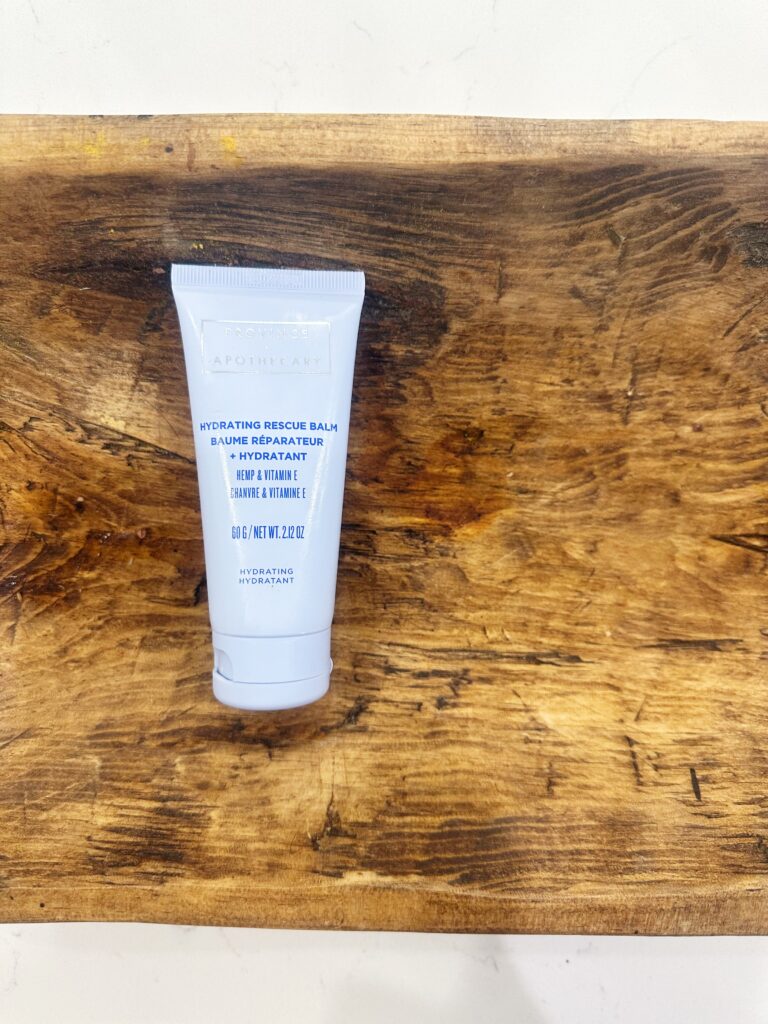
This balm replenishes the skin’s moisture barrier and hydrates without clogging pores. It can be used daily and is safe for sensitive skin and babies.
Active Ingredients
- Hyaluronic Acid
- Sunflower Wax
- Hemp Oil
- Rosehip Seed Oil
Price: $32
Review
This balm is a multitasker! The texture is oily but not in a bad way. Once you apply it to your skin it sinks in and doesn’t feel greasy. It comes in a tube that you can squeeze out which I love. Your skin feels so amazing after applying! They reformulated with mango butter and truly has taken this product up a notch. I also love that it doesn’t have coconut oil in it. I do love some balms that have coconut oil in them, but they are few. I find it can leave more of that oily residue I don’t love on the skin. This works well on any part of the body, I really love it for my hands and feet. At night I apply this on my feet and then put socks on. It really helps to lock in the moisture. It’s so good!
Are Natural Alternatives Better Than Petroleum Jelly?
Natural alternatives provide more benefits to the skin than petroleum jelly. Natural alternatives also have moisturizing properties whereas petroleum jelly doesn’t have any moisturizing properties.
Petroleum is in many products beyond petroleum jelly, think candles, that paraffin wax treatment offered with your pedicure, not to mention other beauty products, it’s pervasive!
With so many natural alternatives these days, why not get better results without the risk of ingesting or inhaling toxic ingredients?
What’s your favorite alternative to petroleum jelly? Share below!
If you liked this post, check out these past posts:
- Best Natural Lip Balms
- How To Use A Lip Scrub + Best Lip Scrub Products
- Affordable Clean Beauty Brands
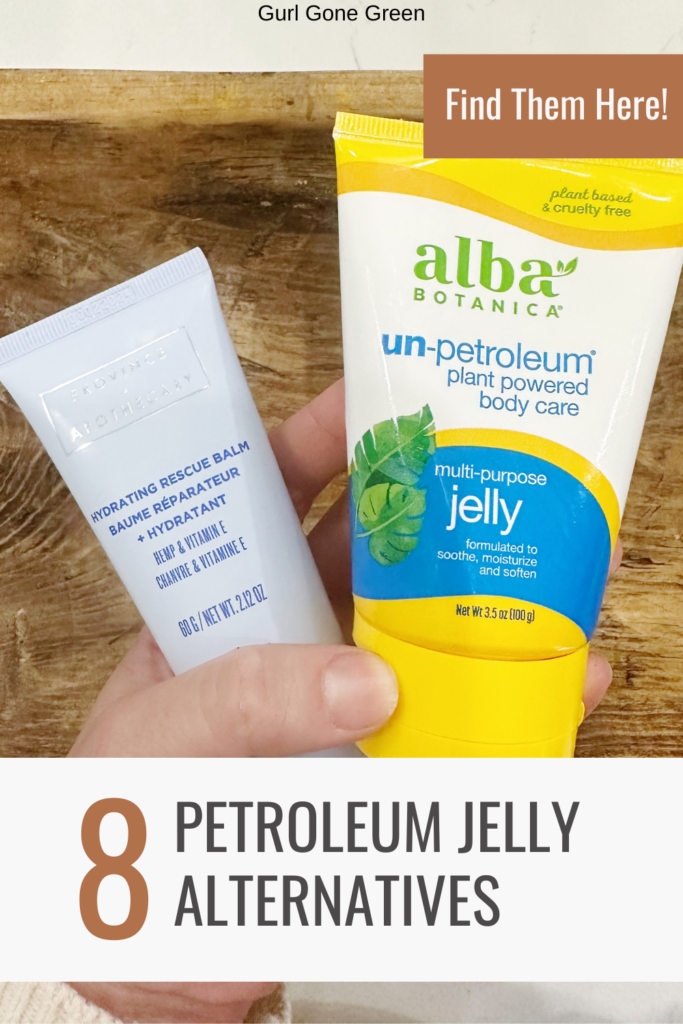
References
- Frontiers in Microbiology (2020) Polycyclic Aromatic Hydrocarbons: Sources, Toxicity, and Remediation Approaches.
- Environmental Toxicology Chemistry (2010) Specific in vitro toxicity of crude and refined petroleum products: II. Estrogen (alpha and beta) and androgen receptor-mediated responses in yeast assays
- Environmental Working Group (2007) EWG Research Shows 22 Percent of All Cosmetics May Be Contaminated With Cancer-Causing Impurity
- Journal of Women’s Health (2011) Evidence for cosmetics as a source of mineral oil contamination in women

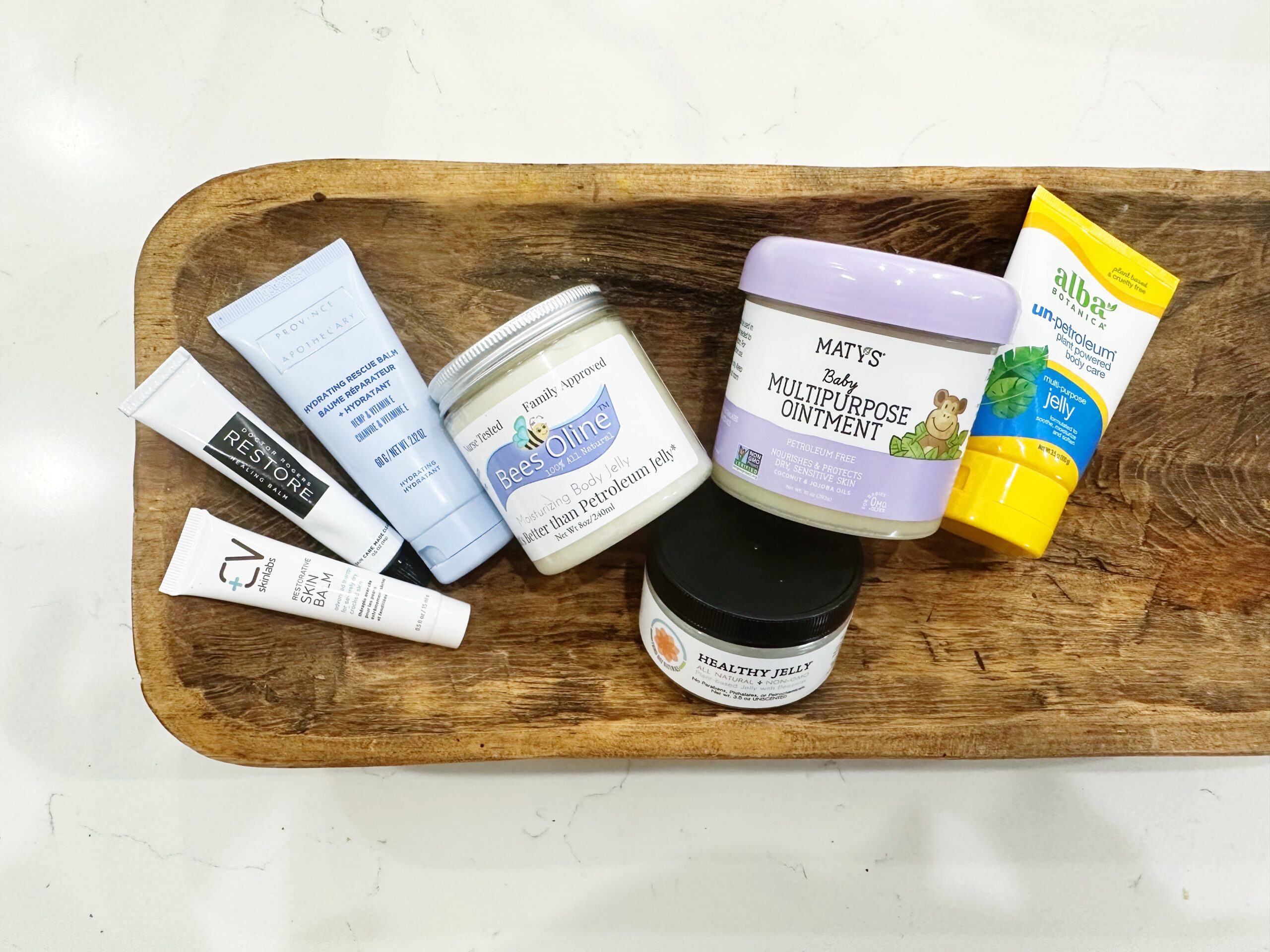

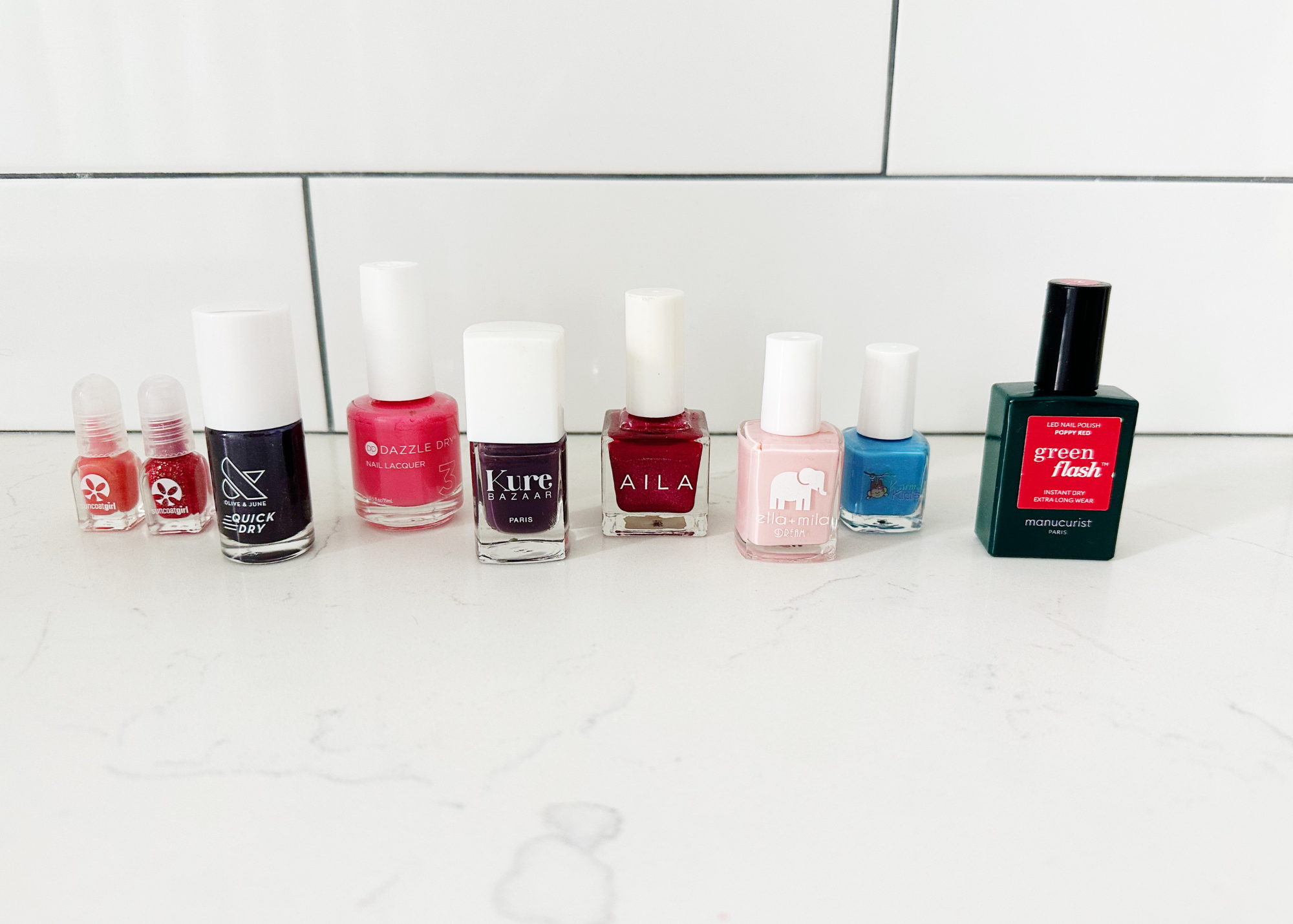
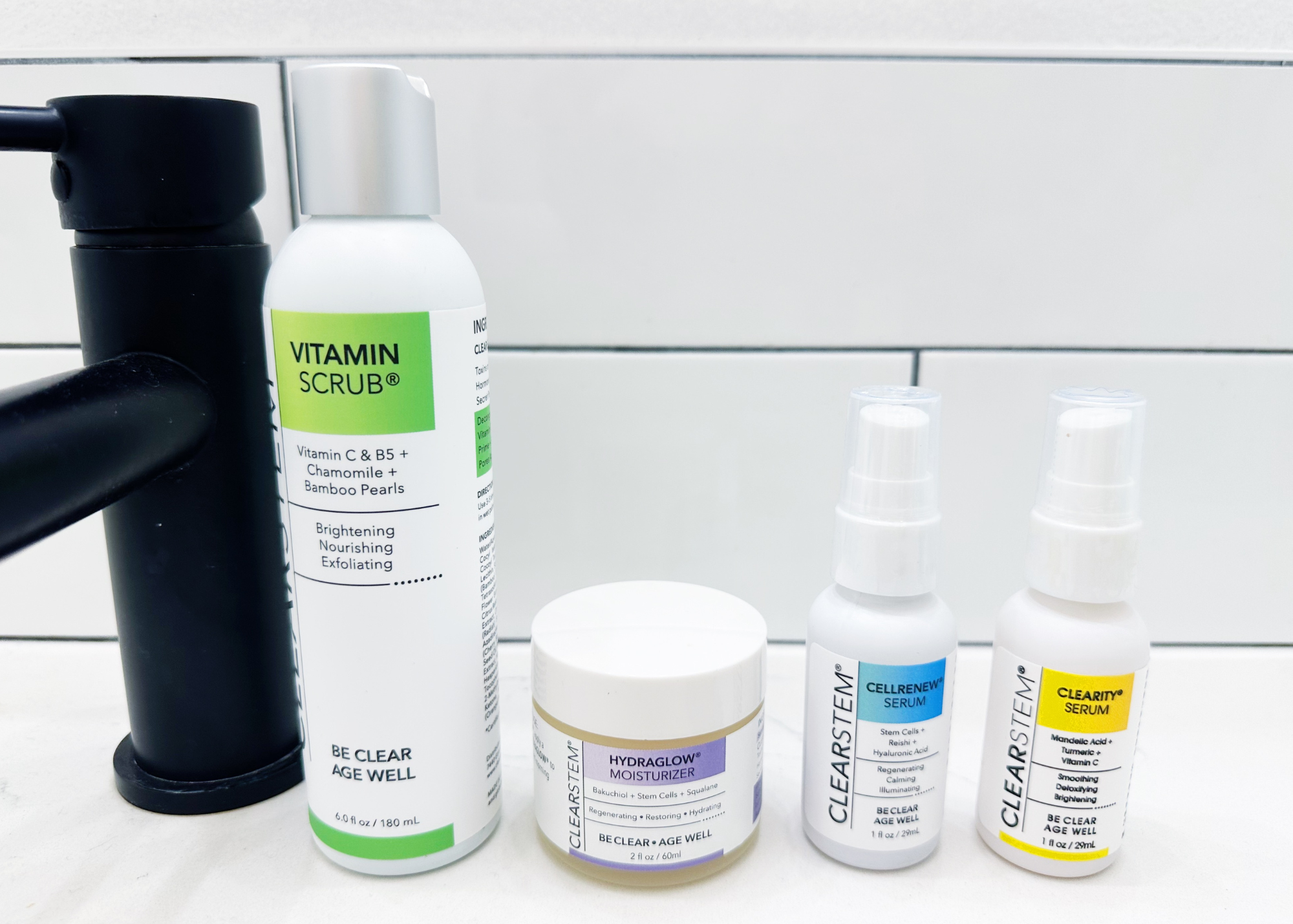
Thank you! This is perfect timing as my daughter will have something on her face removed. The doctor suggested vaseline afterwards.
Perfect! Glad it was helpful. 🙂
Which of these feels the most waxy and least greasy?
Next time you might also review the Balmonds brand.
Hi Christine,
Thanks for the tip- I haven’t heard of Balmonds brand. The CV Skinlabs feels the most waxy and not greasy in my opinion.